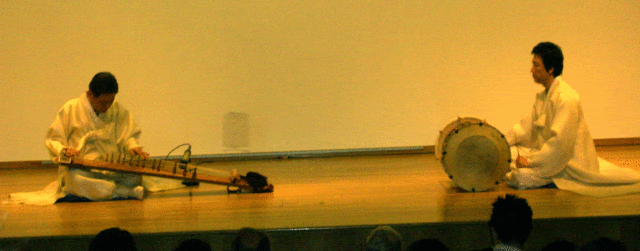
 |
|
Thursday, December 11, 2003
A Lesson in Tact The timing of the Bush Administration asking for non-coalition-of-the-willing countries to show benevolence by cancelling their debt with Iraq just after the Pentagon told them that they werebarred from bidding for Iraq reconstruction projects was comical. The co-ordination and communication obviously absent at the top level was suddenly very salient and very funny. Suffice to say, I doubt any country will be feeling charitable enough to cancel its debt for the US colony of Iraq. A Look into Japan’s Ambitions Recent international events and Japan’s reaction is creating a maelstrom of tension in Asia. In particular is Japan’s decision to send peace-keeping troops to Iraq at the behest of US. The decision is causing much angst in China and and Korea (or that part of which Hankoyreh is representative) (in Korean - hat tip to Marmot for the link). A primary reason to oppose this move stems from Chinese and Korean memories of WWII atrocities and fear of Japanese recidivism. However, for Japan, following the US lead in foreign policy is not only a norm, but is all the more pertinent in the context of the current North Korea nuclear crisis. By sending troops Japan is able to affirm the strength of its alliance with US, provide a background to expect mutual assistance in the eventuality of war or increased threats from North Korea, and to diminish criticism of its ‘checkbook diplomacy’ and address its free-rider image. But more than that, this could also be interpreted as yet another move toward becoming a ‘normal’ nation. Henry Kissinger long ago predicted the inevitability of Japanese re-armament and even a build-up of nuclear capability. Evidence of moves in this direction is not hard. Recent Milestone Changes in Japanese Security Policy 1. In 1992 the Diet in Japan passed the “International Peace Cooperation Act” which allowed for the deployment of peace-keeping troops overseas for peaceful purposes. Japan sent troops to Cambodia, East Timor, and now Iraq A further indication that Japan is increasingly breaking free of the shackles of a US-Japan alliance is its increased leadership role in Asia. While only a few years ago Japan would have been pulled into line by the US for promoting regionalism that excluded the US, Japan is now championing the expanding role of ASEAN+3 and has recently concluded its first bi-lateral trade deal with Singapore. This trend is not only reducing the influence that US maybe able to exert in the region, but it is also lining up Japan and China as competitors for regional dominance. The Financial Times notes that “Tokyo would be unlikely to make public its negotiations with four new countries unless it thought it had a realistic chance of concluding them. That suggests prime minister Junichiro Koizumi's government may be prepared to get tougher with vested interests in what it deems to be the national interest.”The key here is national interest. On both the security and economic front, if Japan perceives that it will be better served by forging its on path rather than continuing to rely on US protection and membership in US dominated multilateral economic arrangements, it is not inconceivable that Japanese re-armament is just around corner and whatever else that may entail - most likely a souring of relations with other Asian nations, especially Korea and China and an arms race in Asia. Immune to Mad Cow Korean scientists have developed a mad cow-resistent bovine. Surely not turning the cows into cannibals and giving them a cow-free diet would be a far cheaper means of creating a mad cow-resistent cow. Afterall, prevention is better than cure/genetic modification.
Permalink Post a Comment
|
Korea Blogs 
Newspapers |